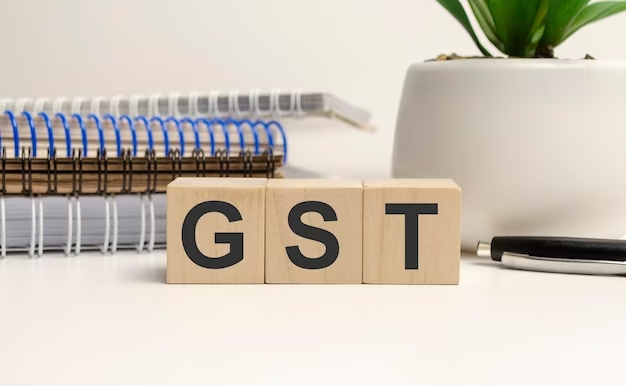Understanding the Process of GST Registration
GST registration is mandatory for businesses involved in the supply of goods with an annual aggregate turnover of Rs. 40 Lakhs or more. Failure to register under GST while carrying out business activities is considered a punishable offense. The registration process typically takes around 2-6 working days to complete.
Essential Documents for GST Registration
- PAN Card and Aadhaar Card of the Applicant
- Incorporation Certificate
- Identification and Address Proof of Promoters
- Bank Account Statement
- Digital Signature
- Letter of Authorized Signatory
How Y/our Lawyer helps in Process of GST Registration ?
Our consultant will discuss the issue over a 24X7 helpline .
Step 1
Our consultant will discuss the issue over a 24X7 helpline .
Step 1
A detailed analysis of your case will be done by an experienced lawyer.
Step 2
You will be able to track your case with a personal account
Step 3
Overview
This article provides a comprehensive guide to the GST registration process, including an overview of the different types of GST registration, the various types of GST, the eligibility criteria for registering under GST, and a detailed list of the necessary documents required for the GST registration procedure.

An Overview of GST Types
In India, the GST system comprises three main types of taxes:
IGST (Integrated Goods and Service Tax): IGST is applicable to the supply of goods or services in inter-state transactions, which occur between two different states. This tax is levied by the central government and helps regulate commerce between states.
CGST (Central Goods and Service Tax): CGST is applicable to transactions involving goods or services that fall under the control or have a component of the central government. It is applicable to all entities within each state and is collected by the central government.
SGST (State Goods and Service Tax): SGST is applicable to transactions involving goods or services that fall under the control of the state government. It is imposed on all intra-state transactions within each state and collected by the respective state governments.
These three types of GST work together to streamline the taxation process and ensure appropriate distribution of tax revenue between the central and state governments.
Eligibility Factors for GST Registration:
Aggregate Turnover: Service providers whose annual aggregate turnover exceeds Rs 20 lakhs (or Rs 10 lakhs for certain special category states) are required to obtain GST registration. Additionally, entities exclusively involved in the supply of goods must register when their aggregate turnover exceeds Rs 40 lakhs.
Inter-State Business: Irrespective of the aggregate turnover, entities engaged in inter-state supply of goods or services must register for GST. If the annual turnover of an inter-state service provider exceeds Rs 20 lakhs (or Rs 10 lakhs for special category states), GST registration is mandatory.
E-commerce Platform: All e-commerce service providers, including platforms like Amazon, Nykaa, Myntra, and Flipkart, are required to obtain GST registration. This applies to providers who supply goods or services through online platforms.
Individual Taxpayers: Individuals involved in occasional or intermittent supply of goods or services through temporary stalls or shops must obtain GST registration. Non-resident taxable individuals engaged in business-related supply of goods or services are also eligible for GST registration.
It is important to note that the specific eligibility criteria may vary and are subject to updates and amendments made by the authorities.
Documents Required for Different Business Entities in GST Registration
- Sole Proprietorship:
- PAN Card details of the proprietor.
- Limited Liability Partnership (LLP):
- PAN Card details of the LLP.
- Agreement of the LLP.
- Name of the partners along with address proof of the partners in the LLP.
- Private Limited Company:
- Certificate of incorporation of the company.
- PAN Card details of the company.
- Memorandum of Association of the company.
- Articles of Association of the company.
- Details of the authorized signatory.
- Board resolution of the authorized signatory.
- Directors’ identity and address proof.
- Digital Signature.
For address proof, a director of the company can provide any of the following documents:
- Passport
- Aadhaar Card
- Voter ID
- Ration Card
- Electricity Bill/Telephone Bill
- Driving License
- Statement of Bank Account/Cancelled Cheque
Please note that the specific documents required may vary based on the nature of the business and applicable regulations. It is advisable to consult the official GST guidelines or seek professional advice for accurate and up-to-date information.
Guide to Online GST Registration:
Step 1: Visit the official GST portal by accessing the URL https://www.gst.gov.in/. Navigate to the Services section and click on Registration, followed by the New Registration option.
Step 2: Fill out the Details: On the GST portal’s new registration page, provide the required information along with the Temporary Reference Number (TRN). This includes taxpayer type, state, legal name of the business or entity, PAN, and email address of the authorized signatory.
Step 3: Verify OTP: After submitting the details, an OTP (One-Time Password) will be sent to the registered email address and mobile number for verification.
Step 4: Generate TRN: Upon successful OTP verification, a TRN will be generated. This TRN is used to complete and submit the application for GST registration.
Step 5: Log in with TRN: Log in to the GST portal using the generated TRN and verify the login with the OTP received on your mobile number and email address.
Step 6: Submit Business Information: Provide the necessary details related to GST registration in this step.
Step 7: Provide Promotor Information.
Step 8: Submit Authorized Signatory Information.
Step 9: Provide Principal Place of Business details.
Step 10: Add Additional Places of Business if applicable.
Step 11: Enter Goods and Services Details: Specify the top five goods or services that will be supplied by the taxpayer.
Step 12: Provide Bank Account Details.
Step 13: Verify the application for registration.
Step 14: Generate Application Reference Number (ARN): Upon successful verification, an Application Reference Number (ARN) will be generated, indicating the completion of the GST registration process.
Please note that the actual online GST registration process may involve additional steps or vary based on specific requirements and updates made by the GST authorities. It is advisable to refer to the official GST portal and guidelines for the most accurate and up-to-date information.
